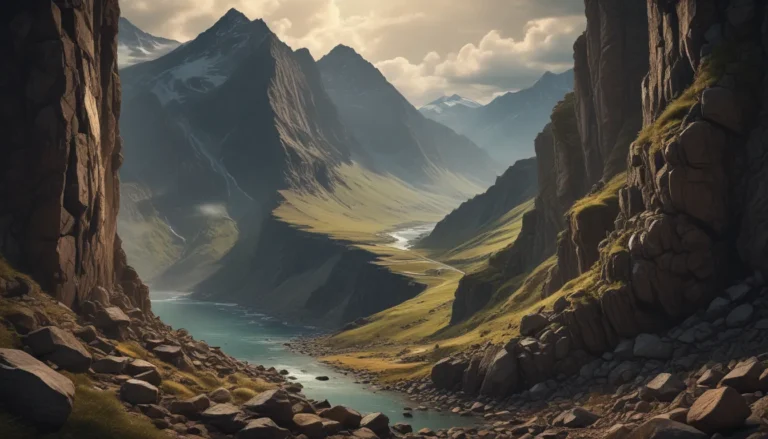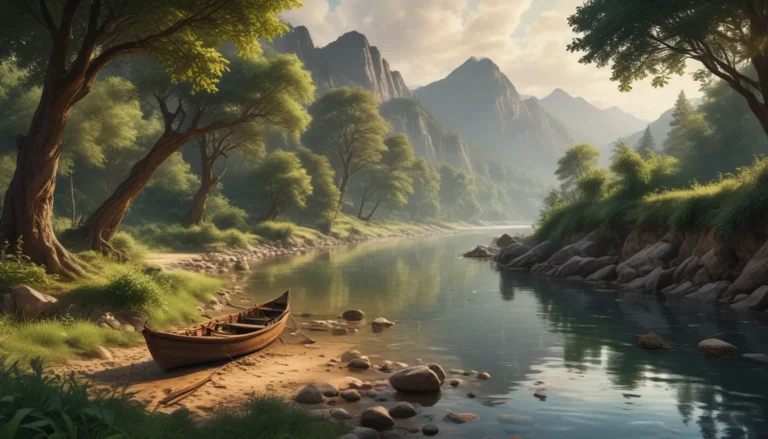A Note About Images: The images used in our articles are for illustration purposes only and may not exactly match the content. They are meant to engage readers, but the text should be relied upon for accurate information.
Are you ready to explore the enchanting world of watersheds? These natural wonders play a crucial role in shaping our environment and supporting life as we know it. From providing clean drinking water to offering habitats for a diverse range of species, watersheds are truly remarkable ecosystems. Let’s delve into 18 astonishing facts about watersheds that will leave you in awe of their beauty, importance, and impact on the world around us.
Key Takeaways:
- Watersheds as Natural Bowls: Watersheds act as natural bowls that collect and direct water. They come in various sizes, influence water quality, and provide crucial habitat for wildlife.
- Dynamic Nature of Watersheds: Watersheds are dynamic systems that constantly change over time. Understanding and protecting these ecosystems are essential for clean water and biodiversity conservation.
The Definition of a Watershed
A watershed, also known as a drainage basin, is an area of land where all the water within it flows into the same river, lake, or other body of water. It functions like a natural bowl, collecting rainwater and guiding it towards a specific outlet.
Watersheds Come in Various Sizes
Watersheds vary in size from small to large, covering a few acres to stretching across entire continents. The largest watershed globally is the Mississippi River watershed, encompassing over 1.2 million square miles of land!
They Influence Water Quality
The vegetation, soil type, and human activities within a watershed significantly impact the quality of water in rivers and lakes. Understanding these factors is vital for maintaining clean and healthy water sources.
Watersheds Are Dynamic
Watersheds are not static entities; they continuously evolve over time. Natural processes like erosion, vegetation growth, and changes in land use shape the characteristics of a watershed, highlighting the interconnectedness of ecosystems.
They Provide Habitat for Wildlife
Watersheds support a rich diversity of plant and animal species, serving as vital habitats for aquatic organisms, birds, mammals, and reptiles. The protection of watersheds is critical for preserving biodiversity.
Watersheds Are Important for Flood Control
Properly managed watersheds play a crucial role in flood control by storing and distributing water efficiently. They help mitigate the risk of flooding by absorbing excess rainfall and regulating water flow.
They Serve as Drinking Water Sources
Many communities rely on watersheds as a source of clean drinking water. Preserving and safeguarding these areas is essential to ensure continued access to safe drinking water for future generations.
Watersheds Contribute to the Water Cycle
Watersheds are integral to the water cycle, collecting, storing, and releasing water to maintain the flow of water through various ecosystems. They are key players in ensuring water availability and sustainability.
They Connect Different Landscapes
Watersheds link diverse landscapes such as mountains, valleys, forests, and plains, serving as natural corridors for the movement of water, sediment, and nutrients. Their interconnectedness is crucial for ecosystem health.
Watersheds Can Span Multiple Countries
Some watersheds cross international boundaries, requiring collaborative efforts between nations to manage and protect shared water resources. Cooperation is essential for maintaining the health of transboundary watersheds.
They Influence Weather Patterns
The shape and characteristics of a watershed can impact local weather patterns, influencing temperature, precipitation, and creating unique microclimates. Watersheds play a significant role in shaping their surrounding environments.
Watersheds Support Agriculture
Many agricultural practices depend on watersheds for irrigation and water supply. Sustainable watershed management is vital for supporting agriculture while minimizing water pollution and preserving natural resources.
They Can Face Threats
Urbanization, deforestation, pollution, and climate change pose significant threats to watersheds, disrupting ecosystems and compromising water quality. Conservation efforts are crucial to mitigate these threats and protect watersheds.
Watershed Restoration and Conservation
Global initiatives are underway to restore and conserve watersheds through reforestation, wetland restoration, sustainable agriculture practices, and raising awareness about the importance of watershed protection. These efforts are vital for the long-term health of watersheds.
They Are Educational Resources
Watersheds offer unique opportunities for education and learning about ecosystems, water conservation, and natural systems’ interconnections. They serve as outdoor classrooms for students to study and appreciate the environment.
Watersheds Support Recreational Activities
From fishing and boating to hiking and bird-watching, watersheds provide diverse recreational opportunities for people to enjoy nature and explore different habitats. They offer beautiful landscapes for outdoor activities.
They Can Be Used for Hydropower Generation
Some large rivers within watersheds are utilized for hydropower generation through dams and reservoirs. Controlled release of water generates electricity, highlighting the multifunctionality of watersheds.
Watersheds Are a Source of Inspiration
The beauty and complexity of watersheds have inspired artists, writers, and poets throughout history, symbolizing the interconnectedness of nature. They remind us of the importance of preserving and cherishing our natural resources.
In delving into the enchanting world of watersheds, it becomes clear that these natural systems are indispensable to our planet’s health. Appreciating and understanding watersheds is essential for our collective efforts towards conservation and sustainability.
Conclusion
Watersheds are truly fascinating and vital components of our natural environment. Their role in providing clean water, supporting ecosystems, and offering recreational opportunities underscores their importance. By exploring the compelling facts about watersheds, we gain a deeper appreciation for their complexity and significance in our lives.
Next time you enjoy a glass of water or take a walk near a river, pause to reflect on the watershed that enables these experiences. Let’s unite in our efforts to conserve and protect watersheds, ensuring a sustainable and healthy future for generations to come.
FAQs
-
What is a watershed?
A watershed is an area where all water, including rain, snowmelt, and runoff, drains into a common body of water like a river or lake. -
Why are watersheds important?
Watersheds provide clean drinking water, support ecosystems, regulate water flow, and offer recreational opportunities. -
How big can a watershed be?
Watersheds vary in size from small areas to vast regions spanning millions of square kilometers. -
Are watersheds affected by human activities?
Yes, human activities such as urban development, agriculture, and industry can impact watersheds, altering water quality and habitats. -
How can I help protect watersheds?
Reduce water consumption, dispose of waste properly, plant trees along water bodies, and support sustainable water management practices. -
Can I visit a watershed?
Many watersheds have public access points like parks and nature reserves where you can explore their significance.
Embark on your journey of discovery and appreciation for watersheds, these captivating natural wonders that shape our world in profound ways. Join us in our commitment to conserving and safeguarding these invaluable ecosystems for a sustainable future.






